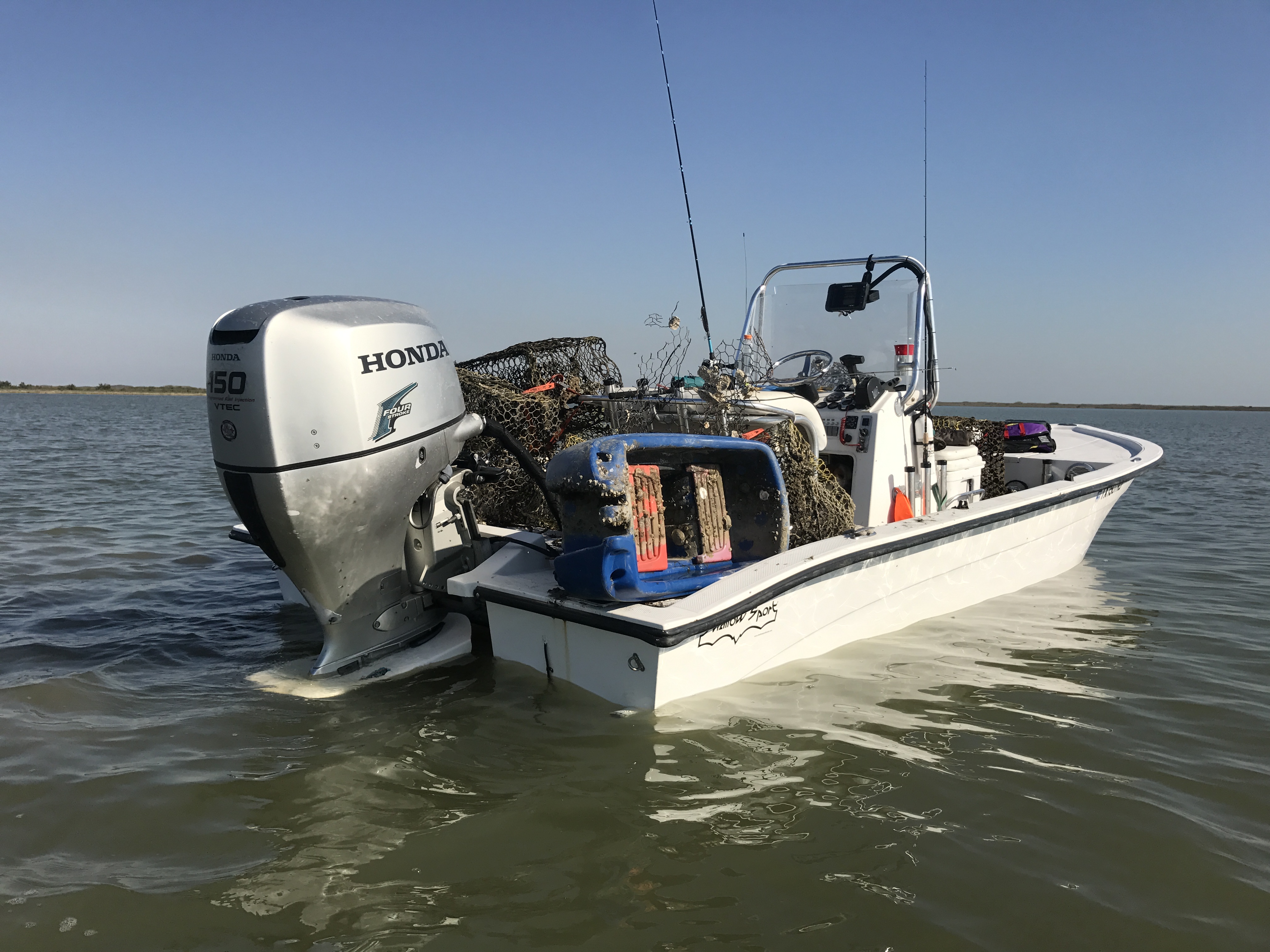
Crabbing on the intercoastal is an exciting (and delicious) activity. Such a unique and scary shellfish, crabs have intrigued Texans since the dawn of time (or so I must assume). As a kid, I always enjoyed hanging a piece of meat off a pier by a piece of string. For a time, it was just about retrieving the crab completely out of the water before it let go. We didn’t actually want it to let go on the dock, because those claws were so vicious looking! As we grew older, we found that collecting them to scare the girls was the most entertaining activity on the coast! Now, however, we stay involved through intercoastal crab trap cleanup.
Commercially, crabbers put thousands of traps out in the bays each year in an effort to make ends meet and provide food for restaurants and families. Storms, damaged ropes and other influences sometimes cause these traps to become unmarked or invisible, and they become abandoned. This has a major impact on the bays’ fishes, crabs, boat props, fishing line and more. And so 15 years ago, the Texas Parks and Wildlife Department (TPWD) and the Coastal Conservation Association Texas (CCA Texas) came together to begin cleaning up these derelict traps through intercoastal crab trap cleanup. TPWD closes the season for two weeks, and volunteers scavenge the bays looking for any traps that remain, load them on their own private boats, and bring them to designated dumpsters along the coast for disposal.
For the last several years, my son and I have made it a point to participate. I think it is important to teach conservation at an early age, and well, my son just gets a kick out of finding them and pulling them up. It’s like a huge Easter egg hunt! For me, it also provides a good deadline to complete my annual boat maintenance and run the boat in preparation for spring and summer fishing.
So it was this past February that we launched the boat and ran San Antonio bay on the hunt. Music jammin’, we cruised along the intercoastal first to confirm everything on the boat was 100% operational. After that, we set our pace at an easy 18 knots, and my son took charge of spotting. Within a few minutes, we were pulling in our first trap! My son is always intrigued to see what is trapped inside and is excited when we release it back. Off again, we collected trap after trap throughout the bay, in the back lakes of Matagorda Island and on the edge of the intercoastal. In one back lake, we even found a Little Tikes wagon! All in, we collected 12 traps and found another use for our MULEstraps… securing all those traps to the boat!
Conversation and cleanup efforts take everyone to be effective; I truly believe individuals must come together to make a difference. I hope to pass this legacy of intercoastal crab trap cleanup on to our kids.
For the adventure ahead.




Growing up, road trips brought families together – loading up gear, securing trailers, and hitting…
Tired of playing a wild game of backseat Tetris every time you pack for a…
As an adventurer, you know the struggles of choosing the right loadout for your wild…
5669 Safari Dr. Suite 101
New Braunfels, Tx 78132
Office Hours
Mon-Thu 8:30 – 4:30
Fri 8:30 – 3:00
